
1 min
OpenGoogle SpamBrain
5 mins
The Knowledge Graph is Google’s system for organising information about millions of well-known entities: people, places, and organisations, to build a map of how information is interconnected. It’s a knowledge base used by Google to enhance its search results with the use of human language technology (e.g. entity recognition and linking) and the semantic web (graphs of linked data).
31 January 2023
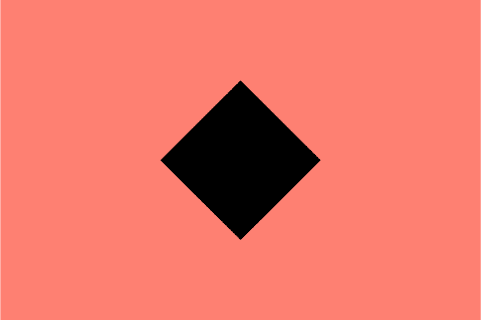
The Knowledge Graph helps Google improve its search relevancy while enhancing search presentation and ease of access to quick information: When a search query contains a notable entity — such as a well-known brand or a famous person — a Knowledge Panel, which is a type of rich answer, is displayed on the results page, populated with instant answers and links to related content.
To enhance the user experience, Google has started to generate insights based on the most popular questions people ask and associated content.
Here’s what that card typically looks like:
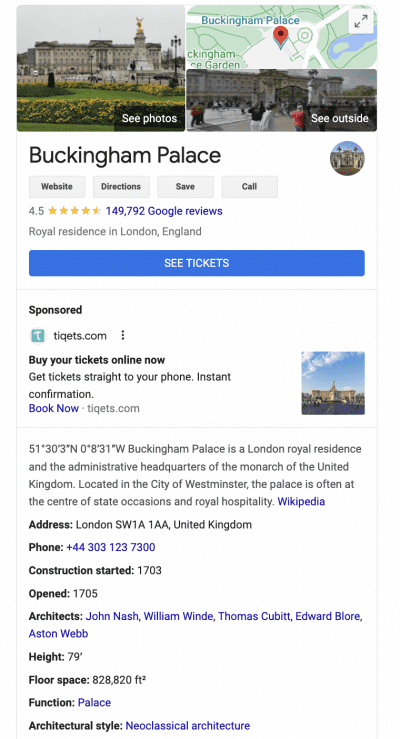
The card is populated with information Google has determined as being relevant to the search query you have entered, in this case “Buckingham Palace”. It includes a basic overview including images, and short description, but also includes more intuitive results like a quick link to entry tickets, contact details, the original architects and amount of floorspace. It provides relevant social and web links, and contextualises results by offering information on topics ‘People also search for.’
It even offers reviews and a 3D model of the building!
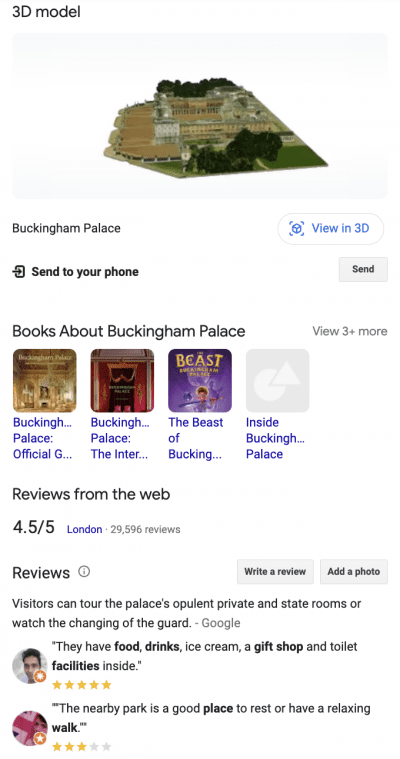
The Knowledge Graph can change, depending on your search and the kind of information and layout that Google believes will best service your intent. For instance, when searching for “Brad Pitt”, the page layout completely changes, and you’re given results ranging from a carousel of movies starring the actor, to a prominent biography and images.
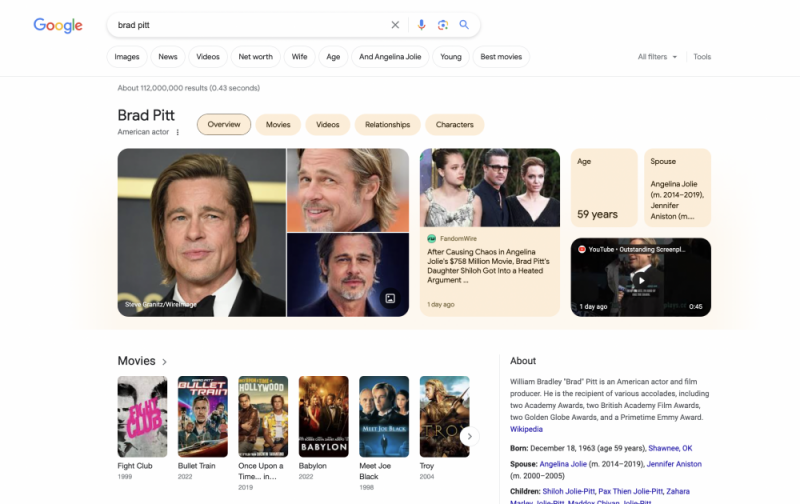
Bing has a similar tool, called the Bing Knowledge Graph, which provides “snapshots” with information about an entity. The cards are available on desktop, tablet and smartphone.
The Knowledge Graph represents an advanced framework that understands the connections between real-world entities. Google refers to it as a system focused on “things, not strings.” It can be likened to Google’s own encyclopedia, comprising entries from various sources such as Freebase, Wikipedia, CIA World Factbook, Ticketmaster, etc. Its purpose is to enrich and refine search queries, ultimately enhancing the overall search experience. Essentially, the Knowledge Graph operates as a vast database, accumulating an extensive array of data pertaining to frequently searched keywords and the underlying intent behind them, primarily derived from popular content among searchers.
Google only publishes a vague outline of how Knowledge Graph works, so the criteria regarding exactly how it operates can be a little fuzzy. Nevertheless, certain areas trigger Google’s interest more than others. Historically, the number of trustworthy links that your web page earned counted for everything. Link building and associated link metrics were the major ranking factors, even for brand-new content. Whereas link based metrics are still vital ranking signals, user experience and well structured, good quality content are now equally as important.
If a search for your brand doesn’t already trigger a Knowledge Graph panel, then the search engine doesn’t (yet!) count the brand as being a popular enough entity for searchers to benefit from seeing additional information.
A search engine understands that an entity or brand is important by seeing it written about, referenced and linked to across the web. Improving your local SEO ranking is one way to help generate an accurate knowledge graph, and your SEO agency can help with a link building, Online PR, onsite copy and content creation strategy to boost your business’ relevance.
While the Knowledge Graph seems like such a user-friendly feature for users, helping them find information easier and faster, it poses a number of problems for SEO. By way of an example, here’s the result of a Google search for “Apple”:
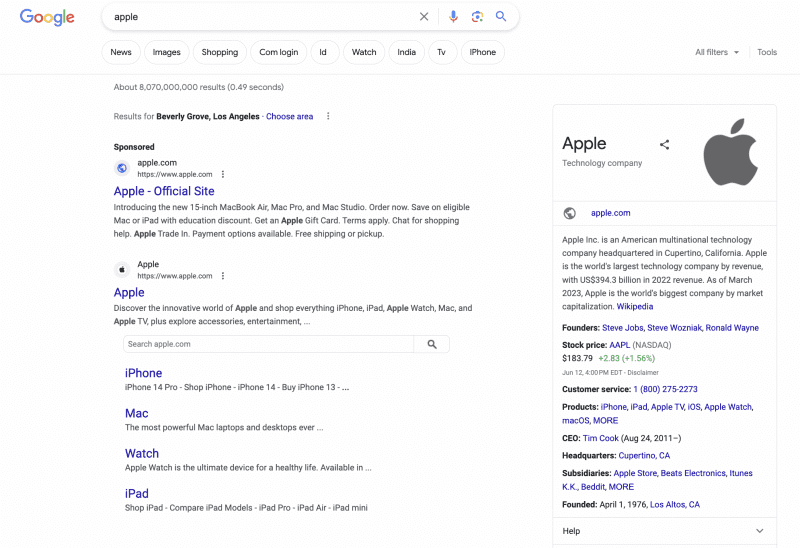
Google relies heavily on prominent data sources, particularly Wikipedia, which, similar to Freebase, depends on contributions from volunteers. This means that Knowledge Graph can either support or hinder a website. While it can provide links to content owned by your brand, it can also direct users to external sites that may be beyond your control.
This can present a problem. Firstly, Apple’s official website offers more than just factual information about the company’s history, stock prices, or executives. It’s highly promotional, featuring various call-to-action buttons, such as “shop” or “learn.” These buttons are not visible on the card displayed to the right of the search results. If a user obtains the necessary information from the knowledge graph, they are less inclined to visit the official website, thereby missing out on exposure to the call-to-action buttons. Consequently, the Knowledge Graph can decrease the likelihood of converting such a user into a buyer.
While the Knowledge Graph data can be difficult to control, most of these queries tend to be informational and thus don’t hold that much transactional value for a business website anyway. A good agency will try to do what they can to improve Knowledge Graph entries (this may include helping optimise your presence in branded search results) but will spend considerably more time on structured data to improve rich snippets. Rich snippets and rich results are how Google interprets web page information based on how the website’s data has been marked up, usually using schema or some other form of structured data.
Rich results take effect when the query is a bit less clear (usually not just person or place but an actual question). Google’s results are then taken directly from a website (rather than the Knowledge Graph).
There are three key ways your SEO agency can help your site appear in rich snippets:
Structured data refers to site data with a high level of organisation, such as contact information or, say, a food recipe. When information is highly structured and predictable, search engines can more easily organise and display it in blended search results in creative ways. When you’re optimising for Google, try to spoon-feed your content to the crawlers.
Structured data markup is a strategy that applies searchable tags to your site data. It typically uses the schema vocabulary and can indicate key business or company details, provide business contact mark up and indicate other key content on your site.
The Knowledge Graph considers your site relative to context and the user’s intent, which means you should make your site navigable to search spiders as well as to actual human users. Understand the way that your audience finds information on your site as well as any other information related to that search that they might be looking for. And then cater to this information on your page.
If you’re the authority for certain content, Google will often treat the structured data on your site as factual and import it into the Knowledge Graph, where it can power prominent answers in search and across Google properties.
A search engine’s main function is to answer queries. The Knowledge Graph understands this need and answers real questions, rather than simply generating a list of websites that match keywords. Google’s doing a great job at returning highly relevant and related content, so websites must step up and do the same.
Using this information properly doesn’t just mean adapting to the knowledge graph’s rules, but also to your audience’s needs. If you want to rank high in search engine results pages (SERP) within the Knowledge Graph algorithm, you should consider targeting key search queries such as “how to…”, “how do I…”, “who is…” etc. in your on-site content.